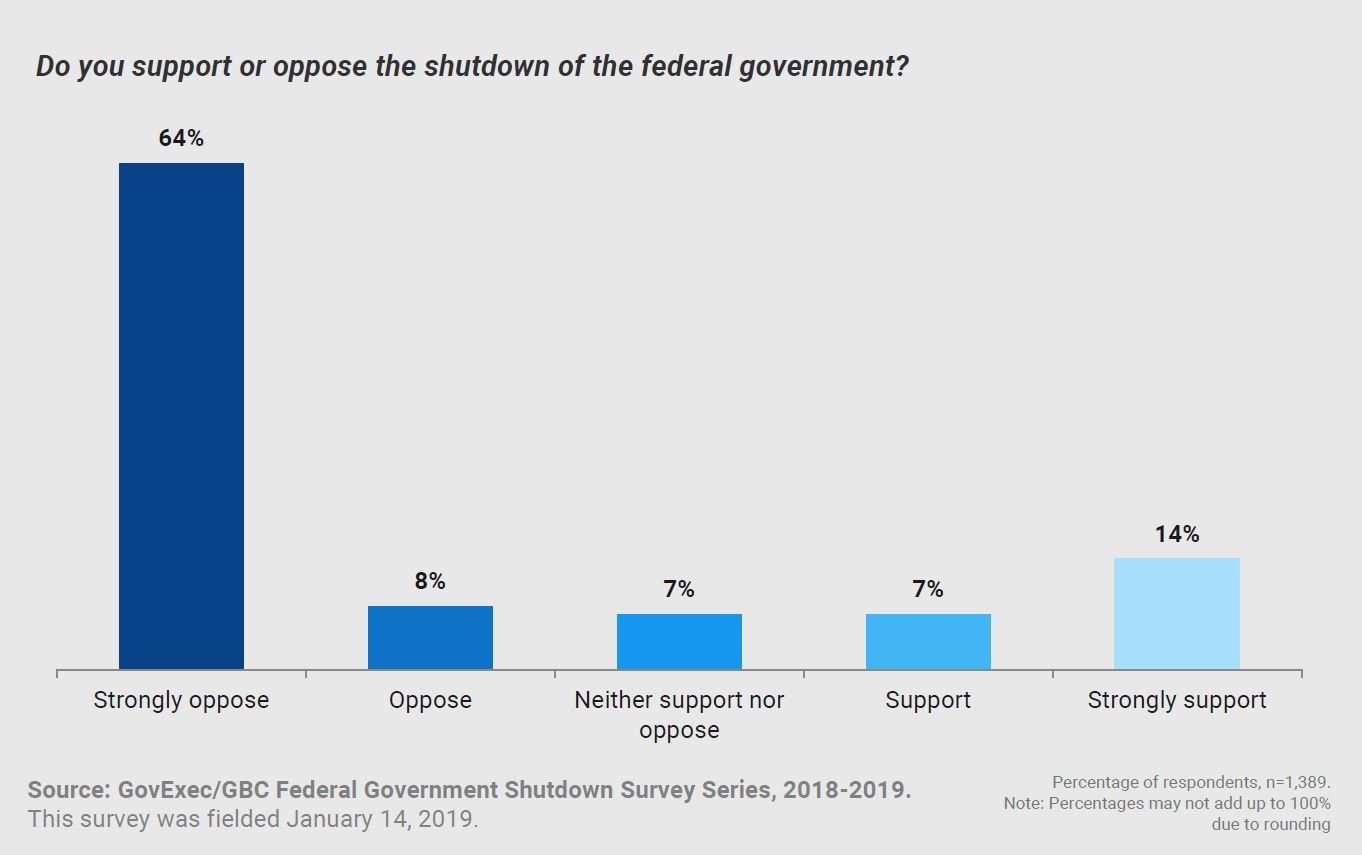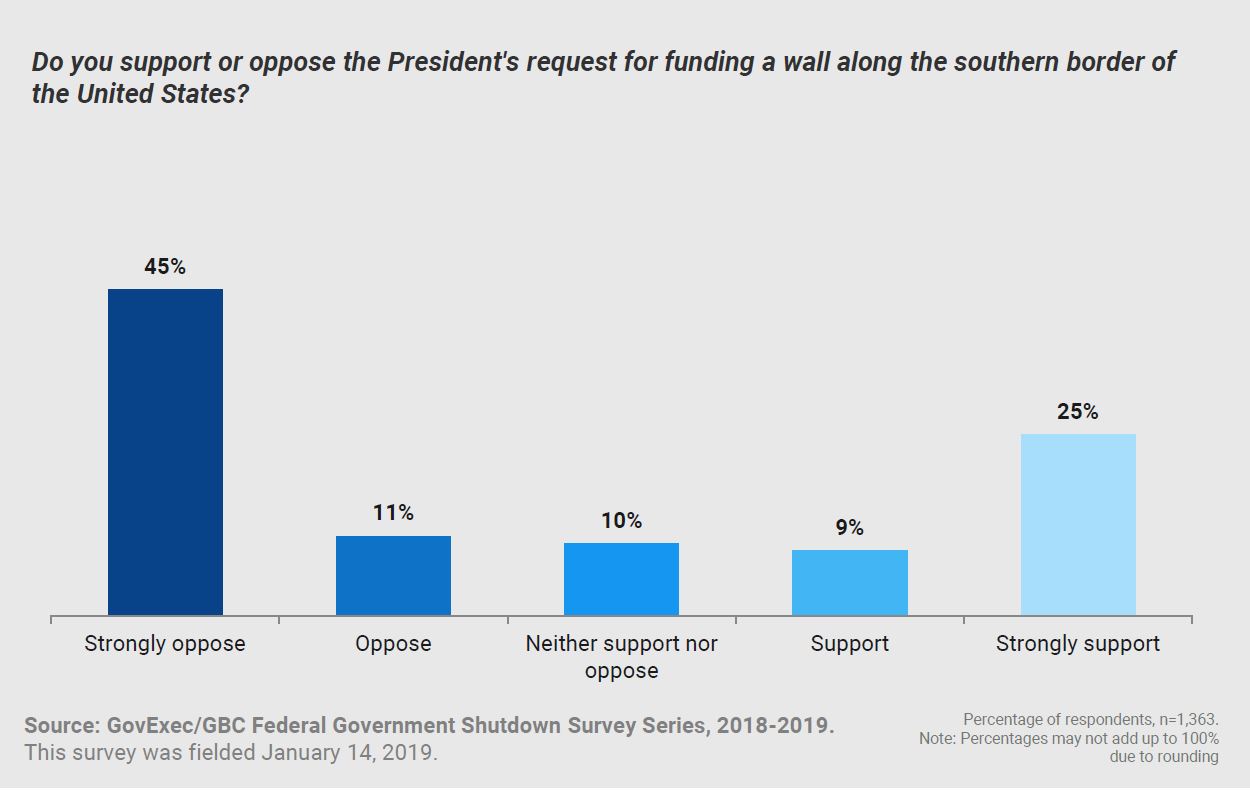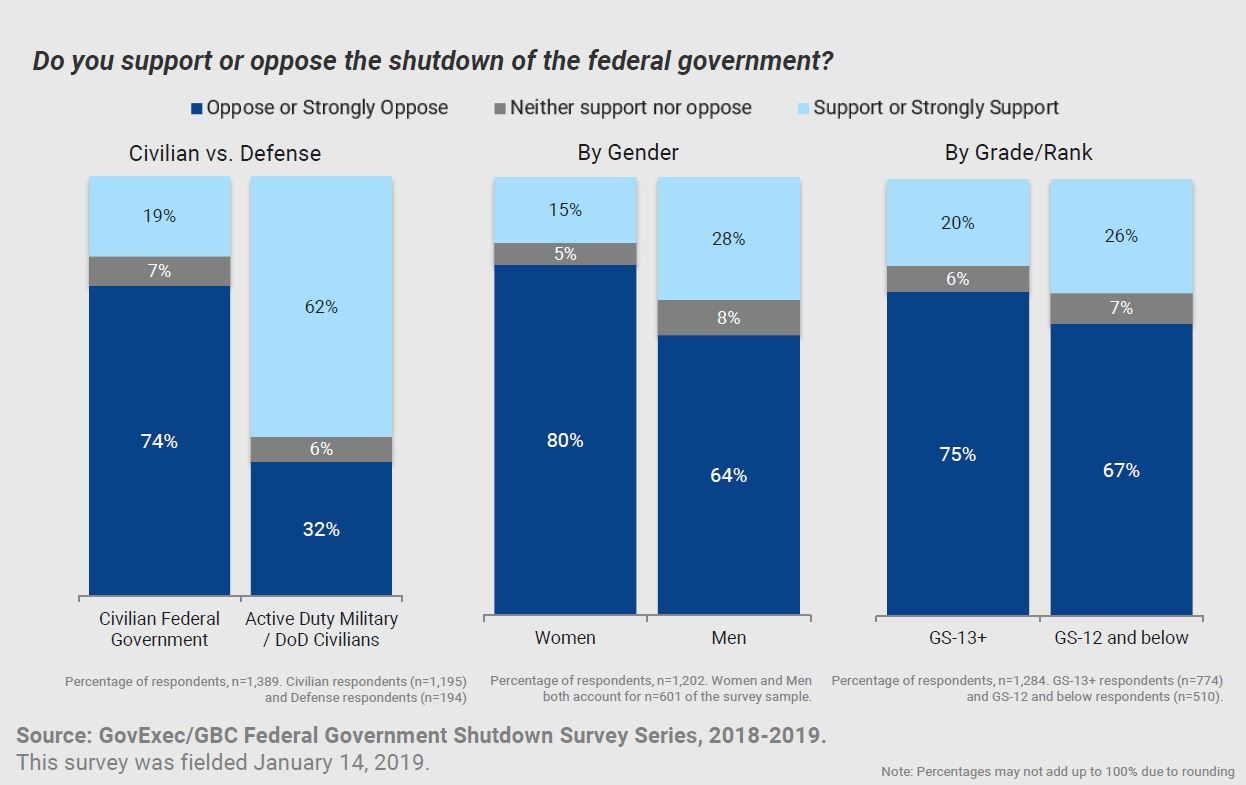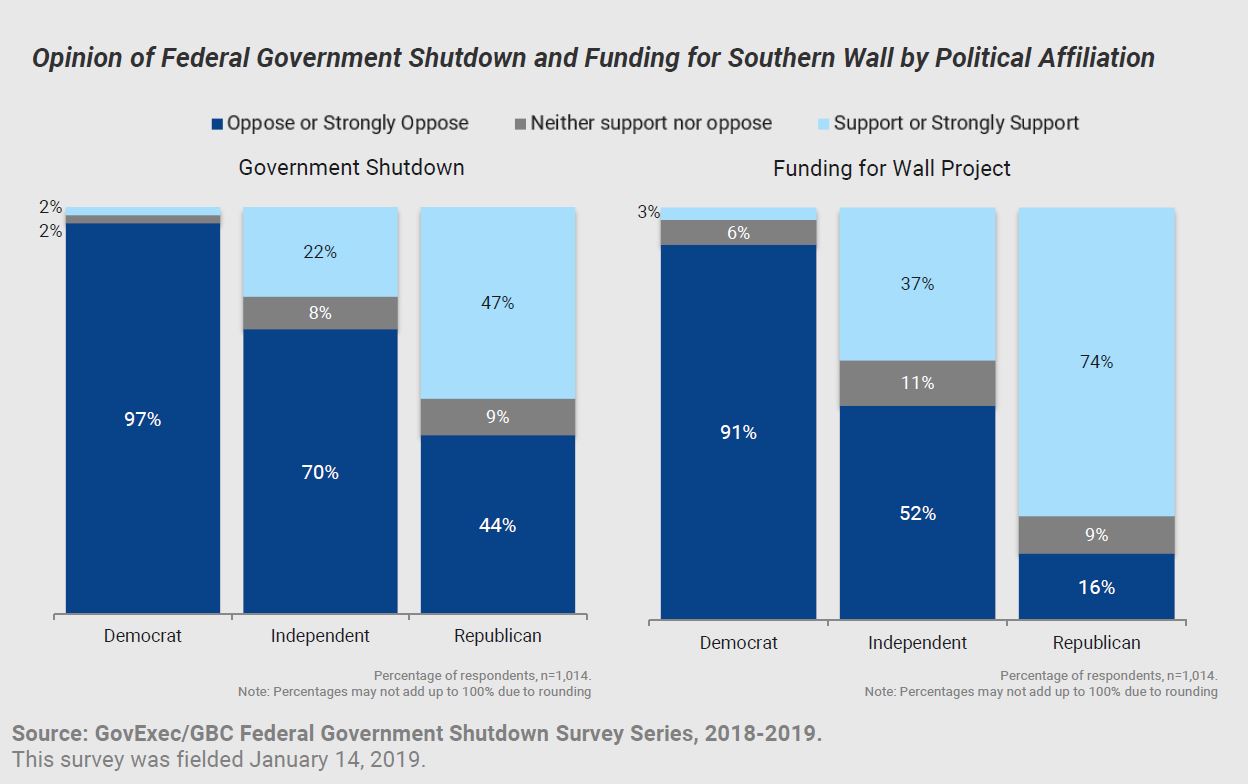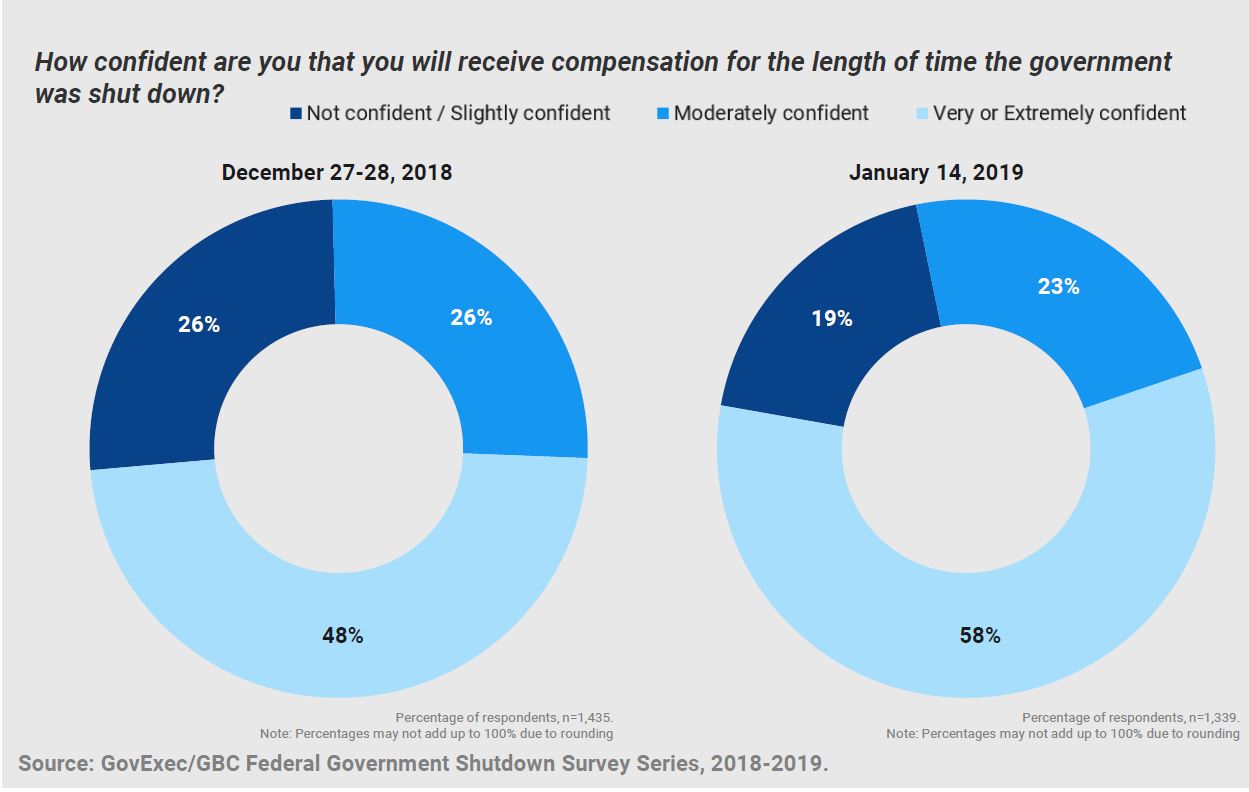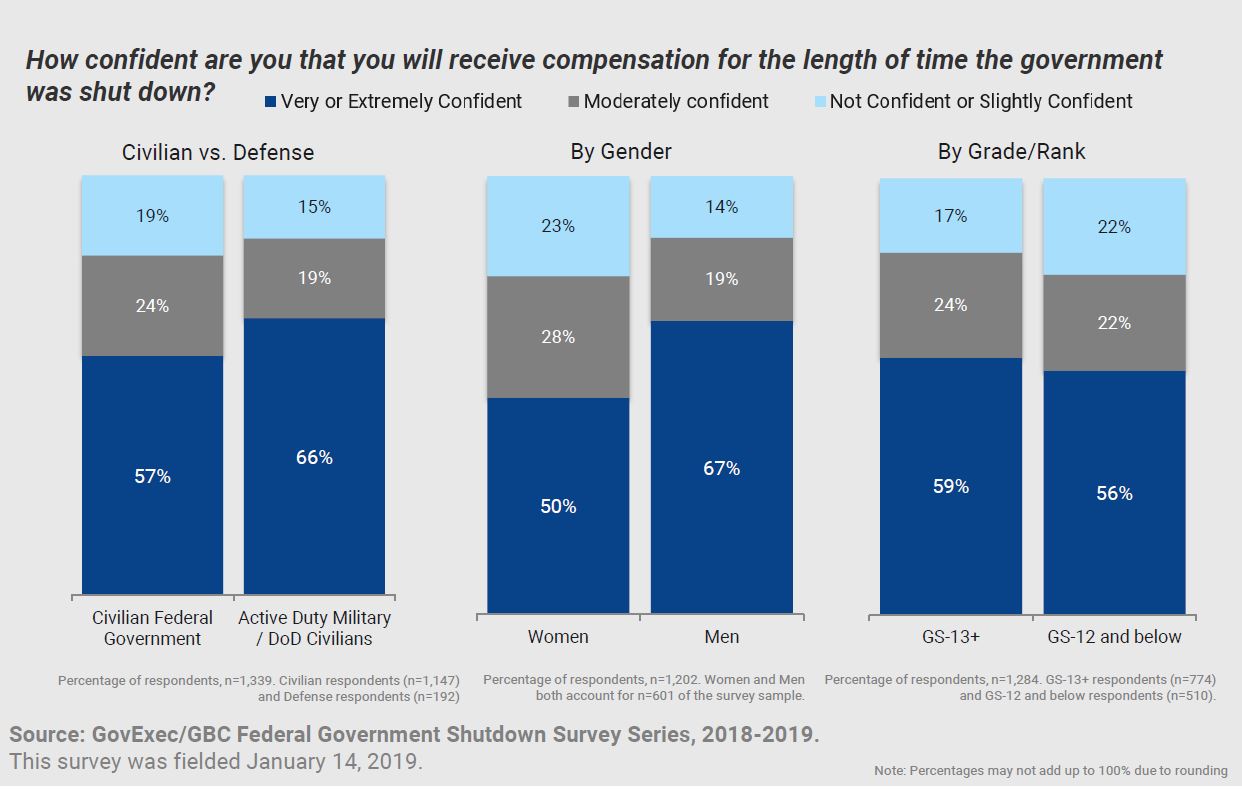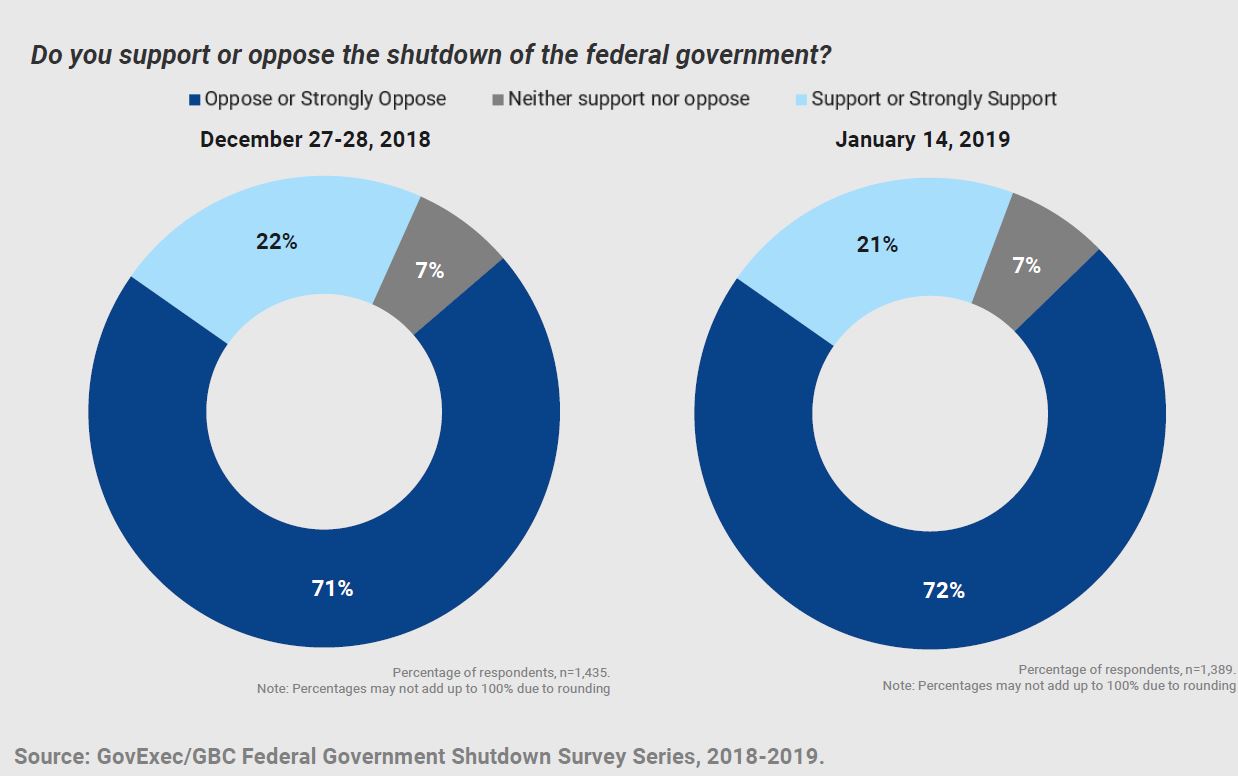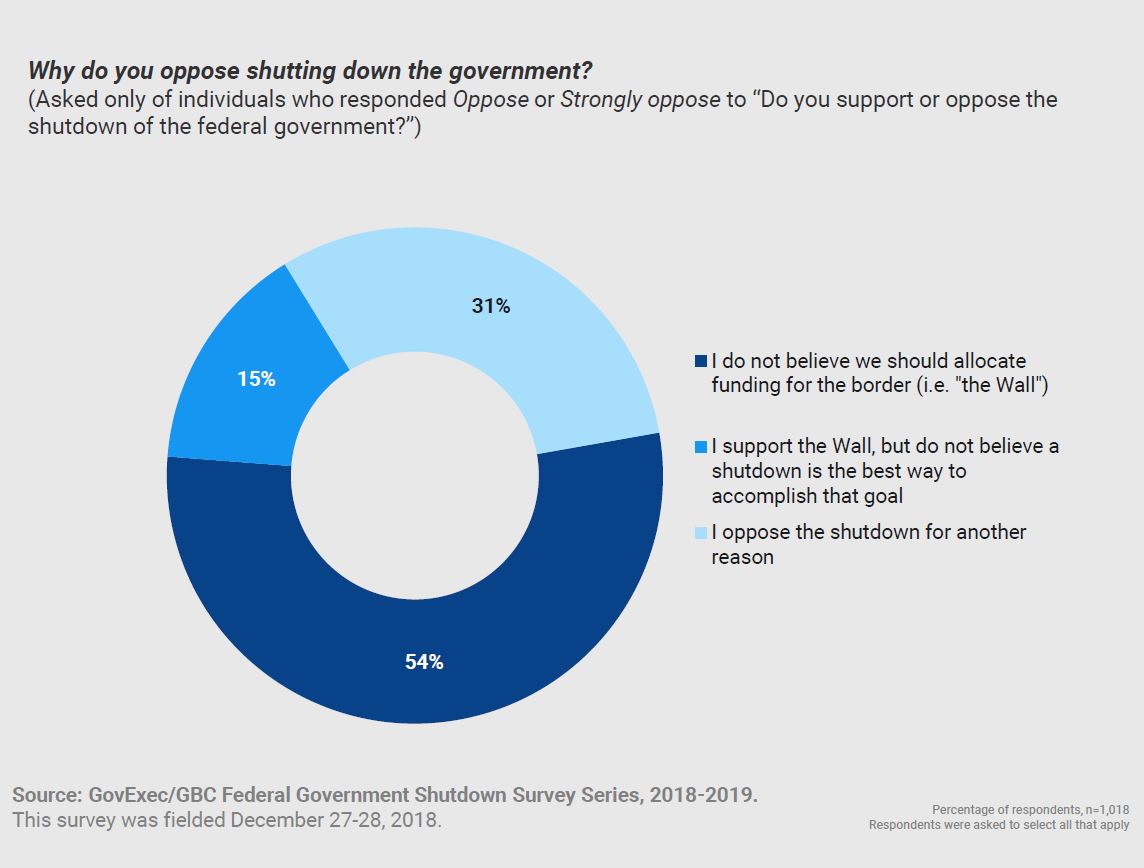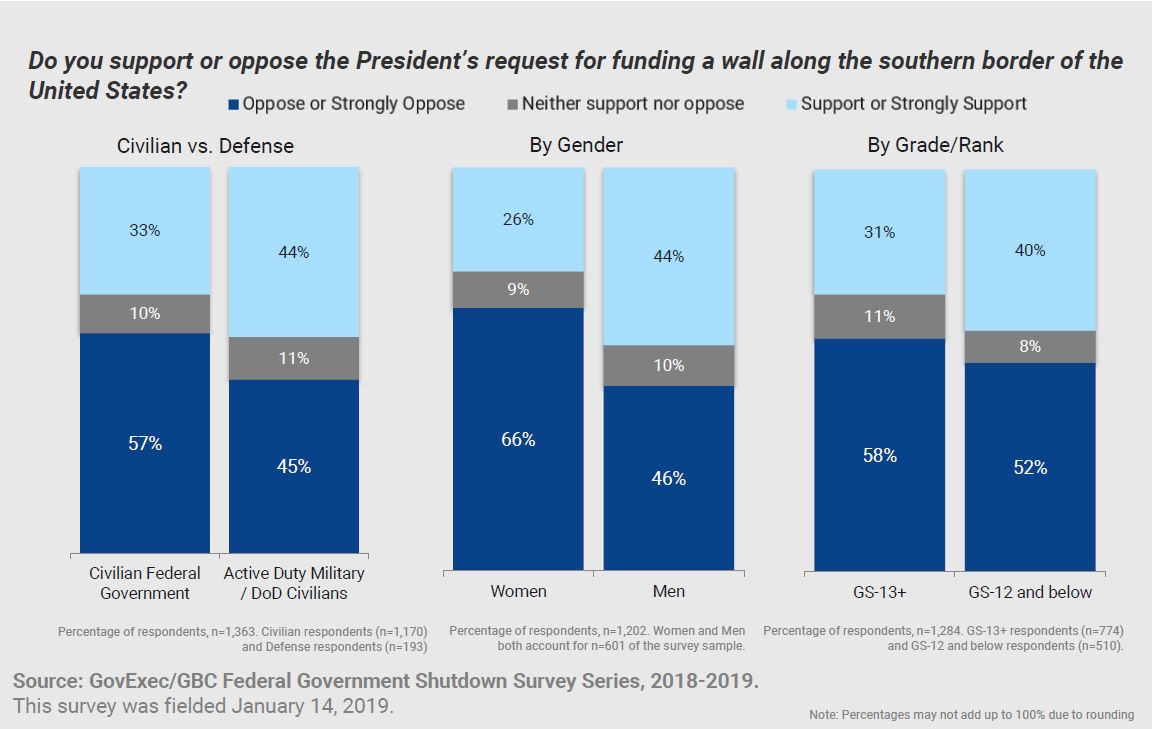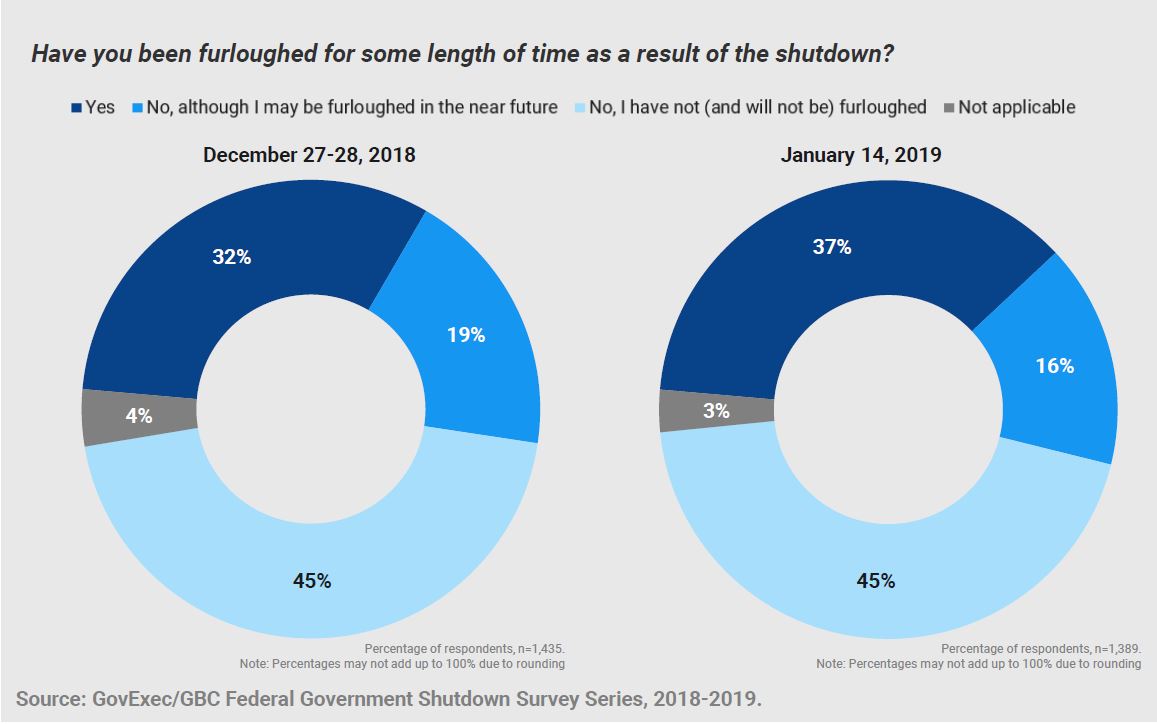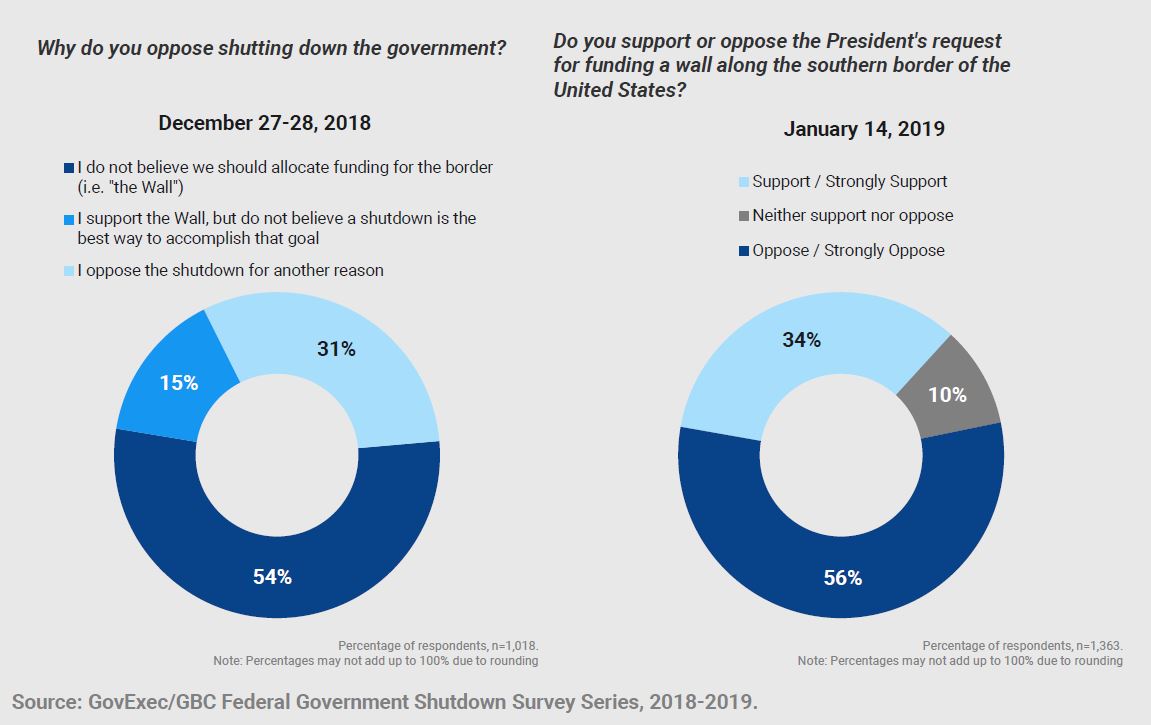We find that federal workers are largely opposed to both the federal government shutdown and President Trump’s proposal for funding a wall along the southern border of the US, which will be referred to in this report as “the wall project.” While just more than half of government workers (56%) oppose or strongly oppose the President’s proposal for wall funding, nearly three-fourths opposed or strongly opposed the federal government shutdown ― 71% on December 27-28, 2018 and 72% on January 14, 2019.
These findings also largely held between the two surveys: A large majority of federal government workers do not support the federal government shutdown and a majority are opposed to the President’s funding proposal for the wall project. Additionally, across an audience that includes both federal government employees in civilian and defense/IC agencies as well as active duty service members, more than half (57%) of those polled on January 14, 2019 were very or extremely confident that they will receive compensation for work performed during the furlough period. This was a slight increase from the share that reported back pay confidence in December 27-28, 2018 (48%) and immediately preceded President Trump’s signing of back pay legislation on January 16, 2019.
A number of demographic-level differences are helpful in understanding the workforce’s perceptions of the ongoing government shutdown:
.jpg)



